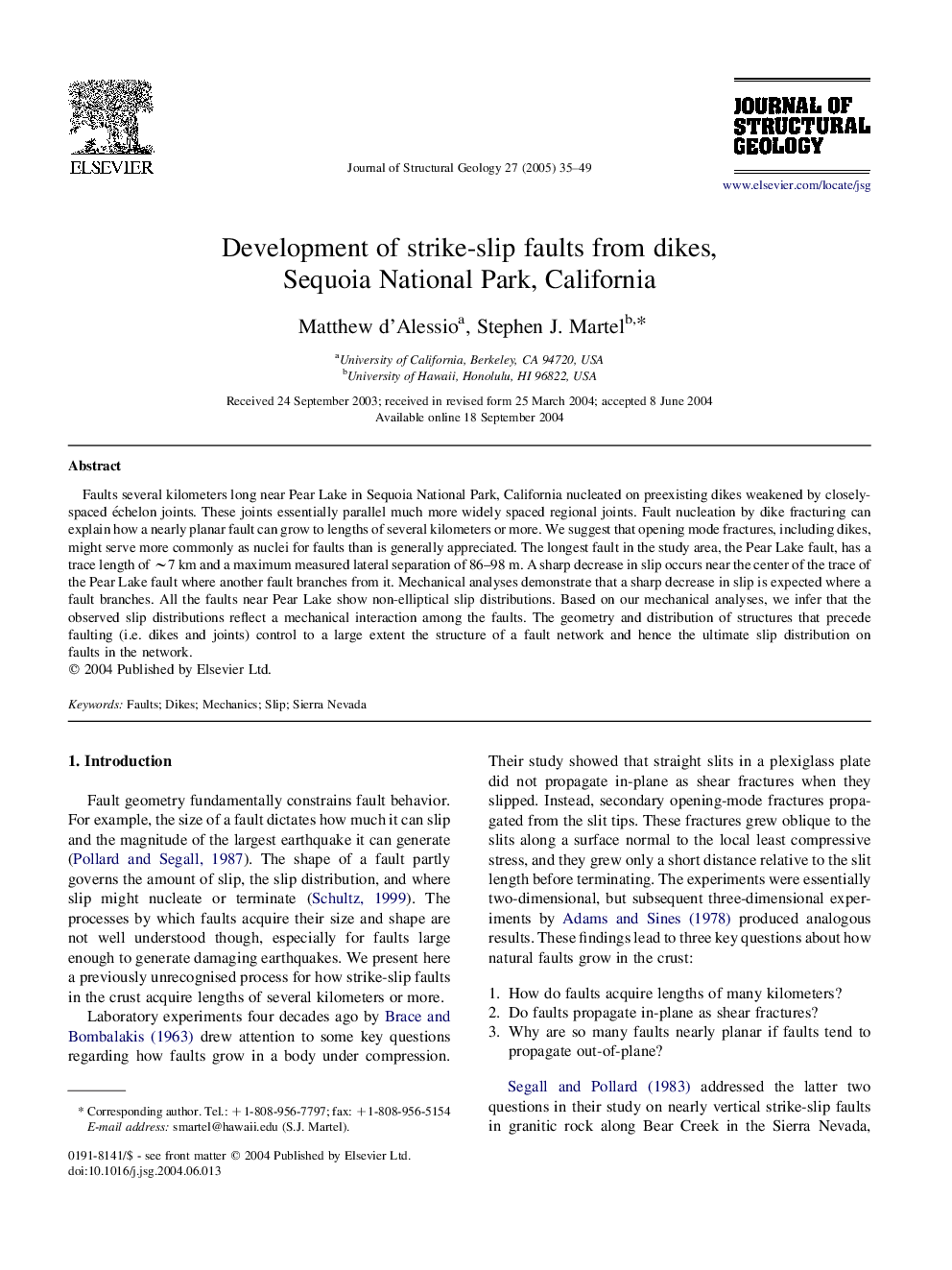| کد مقاله | کد نشریه | سال انتشار | مقاله انگلیسی | نسخه تمام متن |
|---|---|---|---|---|
| 9536144 | 1357087 | 2005 | 15 صفحه PDF | دانلود رایگان |
عنوان انگلیسی مقاله ISI
Development of strike-slip faults from dikes, Sequoia National Park, California
دانلود مقاله + سفارش ترجمه
دانلود مقاله ISI انگلیسی
رایگان برای ایرانیان
موضوعات مرتبط
مهندسی و علوم پایه
علوم زمین و سیارات
زمین شناسی
پیش نمایش صفحه اول مقاله

چکیده انگلیسی
Faults several kilometers long near Pear Lake in Sequoia National Park, California nucleated on preexisting dikes weakened by closely-spaced échelon joints. These joints essentially parallel much more widely spaced regional joints. Fault nucleation by dike fracturing can explain how a nearly planar fault can grow to lengths of several kilometers or more. We suggest that opening mode fractures, including dikes, might serve more commonly as nuclei for faults than is generally appreciated. The longest fault in the study area, the Pear Lake fault, has a trace length of â¼7Â km and a maximum measured lateral separation of 86-98Â m. A sharp decrease in slip occurs near the center of the trace of the Pear Lake fault where another fault branches from it. Mechanical analyses demonstrate that a sharp decrease in slip is expected where a fault branches. All the faults near Pear Lake show non-elliptical slip distributions. Based on our mechanical analyses, we infer that the observed slip distributions reflect a mechanical interaction among the faults. The geometry and distribution of structures that precede faulting (i.e. dikes and joints) control to a large extent the structure of a fault network and hence the ultimate slip distribution on faults in the network.
ناشر
Database: Elsevier - ScienceDirect (ساینس دایرکت)
Journal: Journal of Structural Geology - Volume 27, Issue 1, January 2005, Pages 35-49
Journal: Journal of Structural Geology - Volume 27, Issue 1, January 2005, Pages 35-49
نویسندگان
Matthew d'Alessio, Stephen J. Martel,